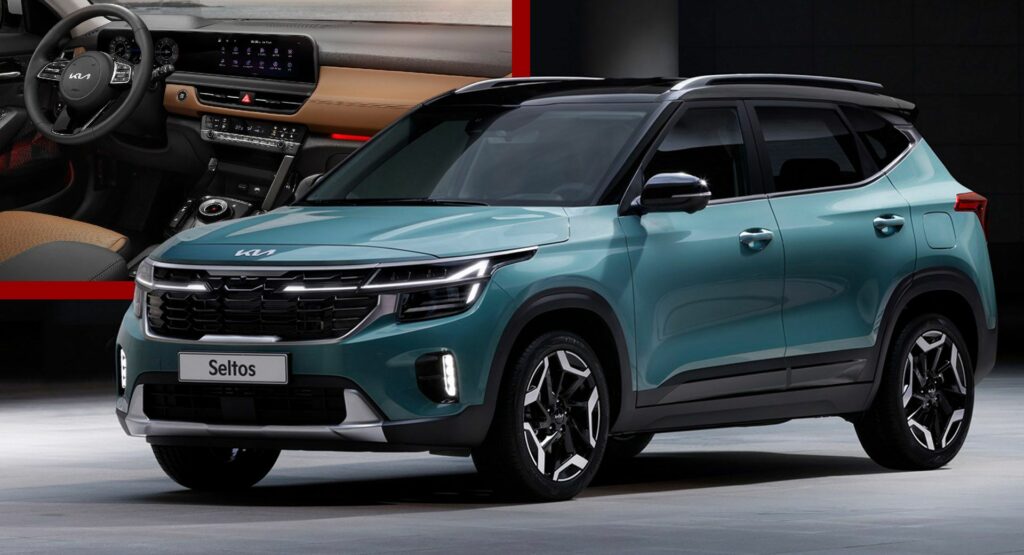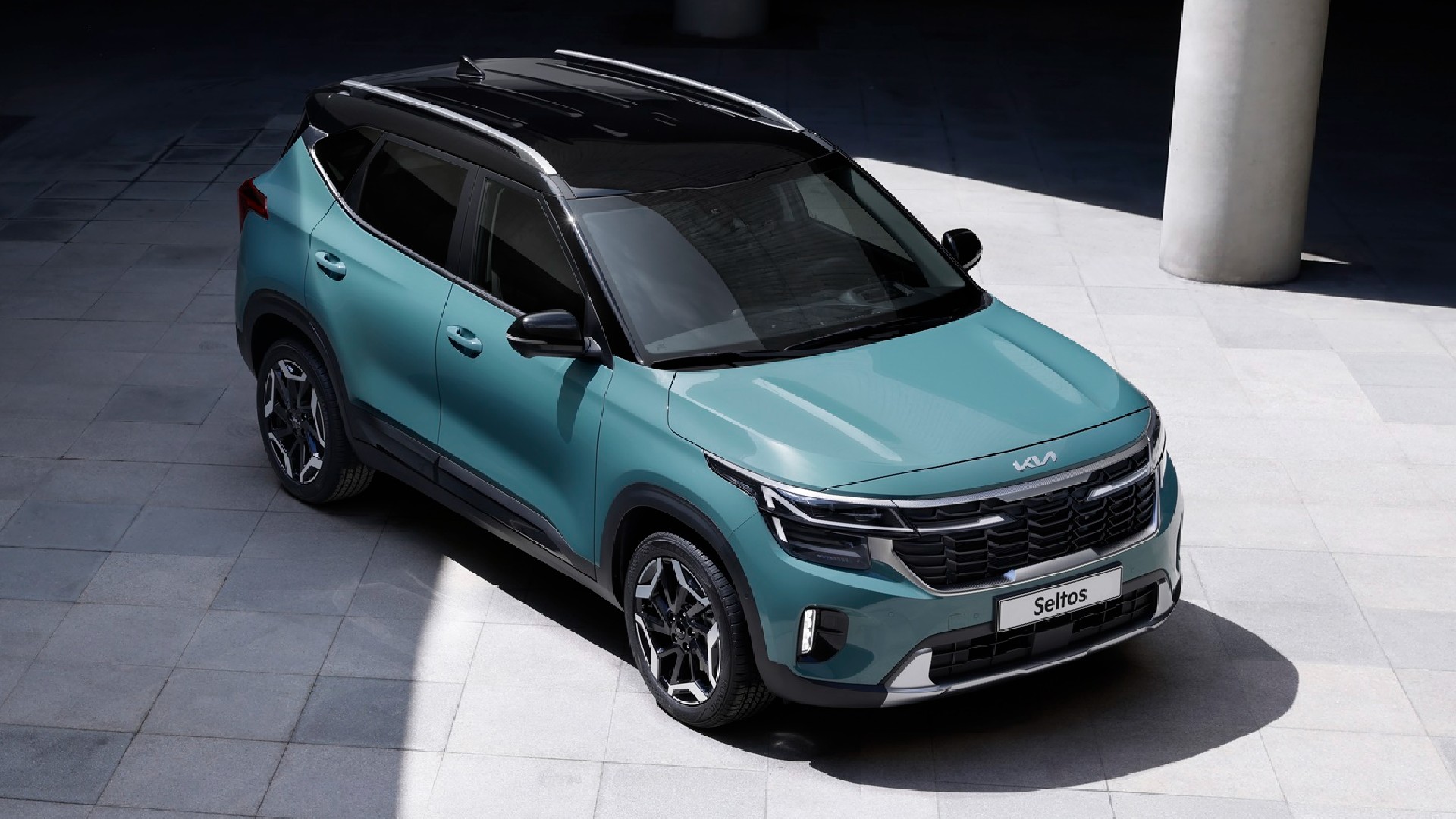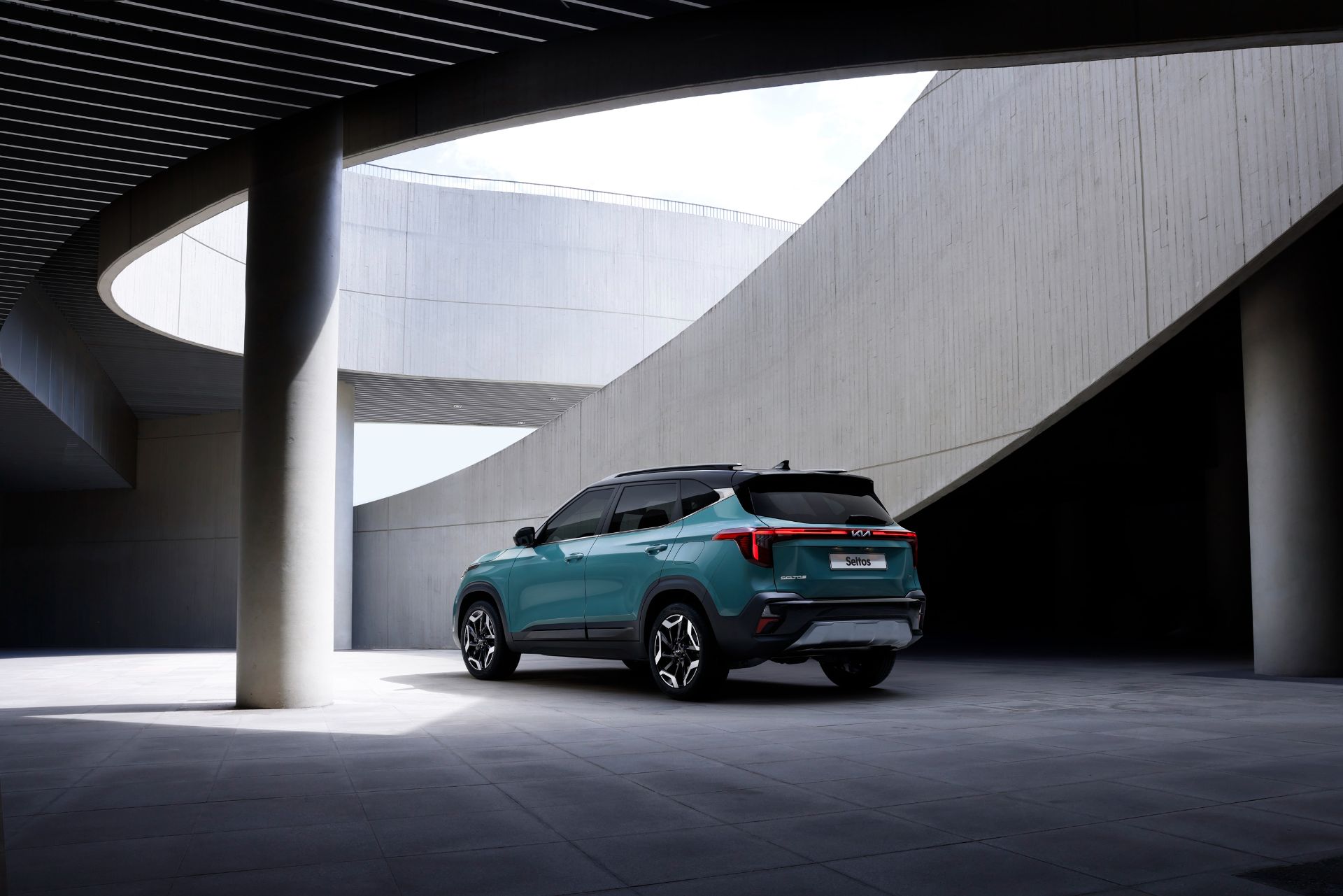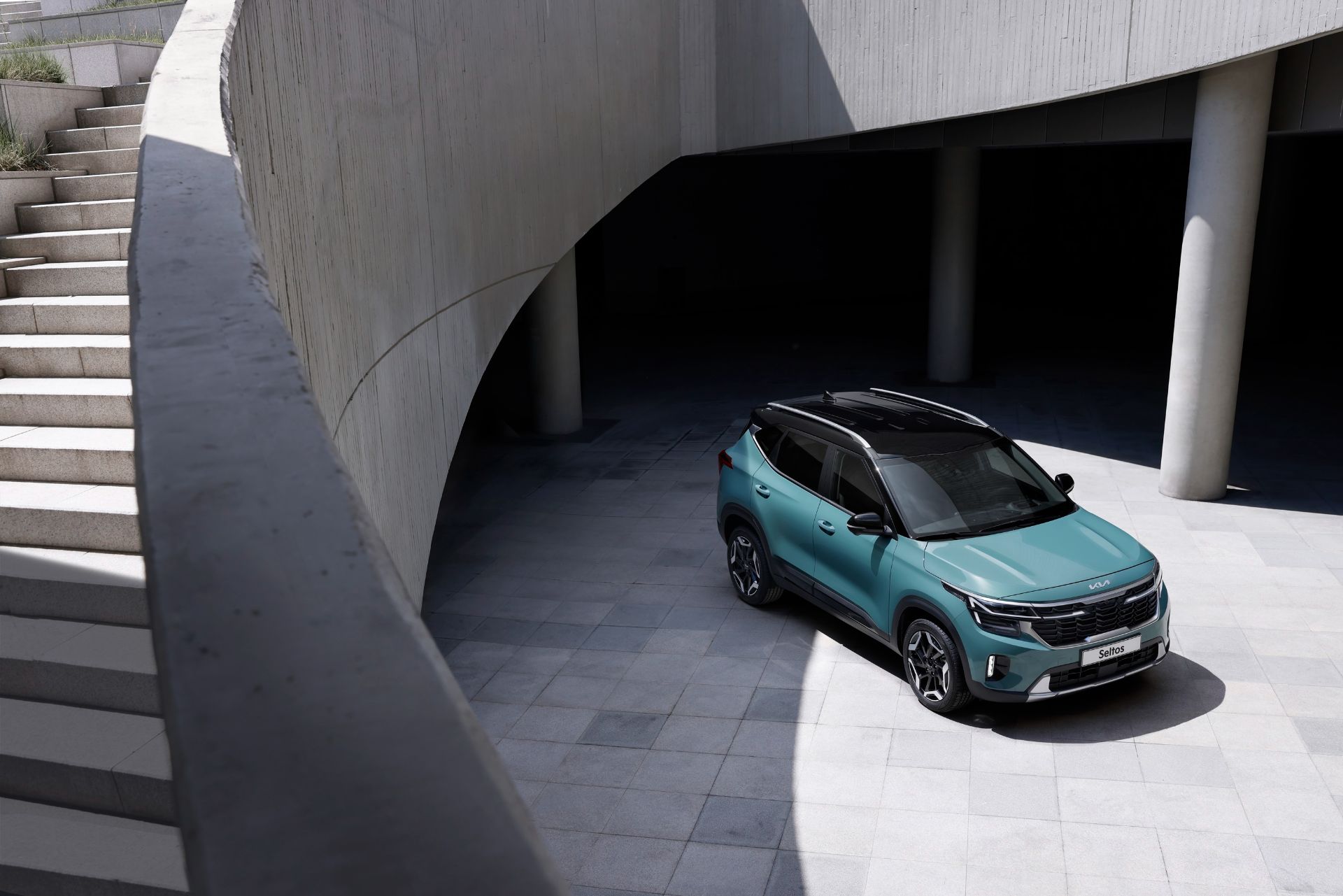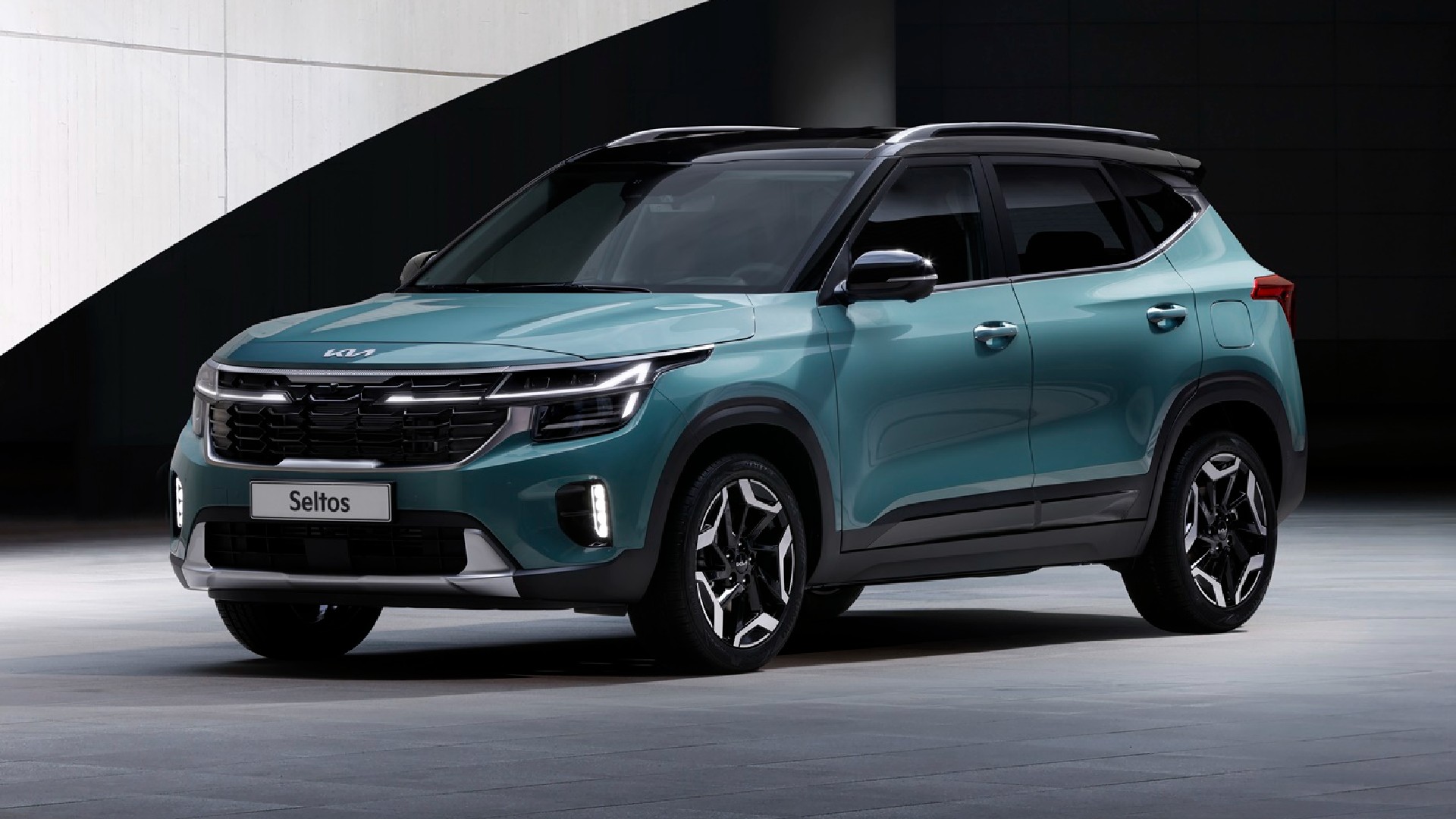Kia published the first official photos of the facelifted Seltos, showing fresh design cues alongside modern tech inside the cabin.
It might not seem like too long ago, but the Seltos is already three years old, having debuted in 2019. This makes 2022 a fitting time for a mid-lifecycle update, bringing it closer to the more recent models of the Kia lineup in terms of design and tech.
See Also: 2023 Kia Soul Debuts With A Tweaked Face, Turbo And X-Line Trims Discontinued
At the front, the SUV got new LED headlight graphics that are now connected with illuminated elements on the revised grille. The bumper has also been redesigned, gaining a more modern look thanks to the simpler intakes and the new aluminum-style skidplate.
The profile remains unchanged, setting aside new designs for the wheels and a fresh color palette with two-tone options. Changes are more noticeable at the back, where the updated Seltos features a full-width LED light bar connecting the new and more upright taillights and replacing the chrome trim of its predecessor. The tailgate is also new, as is the rear bumper with integrated lights and skidplate.
See Also: There’s A New Kia Carens In Town With Boxier Looks, Same Family-Friendly Character
Moving inside, we find a new digital cockpit comprising a 10.25-inch digital instrument cluster and a 10.25-inch infotainment touchscreen. The displays are now housed within the same panel, similar to the larger Sportage and other Kia models. The center console has new buttons for the climate controls and a new selector for the automatic gearbox, while the dashboard gets ambient lighting. We also expect more standard ADAS and improved connectivity.
Kia has yet to announce the engine range of the 2023 Seltos, but the powertrains will most likely be carried over from the existing model. There is also a rumored addition of a hybrid, but nothing has been confirmed yet.
The updated Kia Seltos is scheduled for a full reveal at the 2022 Busan Motor Show on July 15, when we are going to learn more about its specifications. The roll-out will likely start from Korea, with export markets to follow shortly after that.




